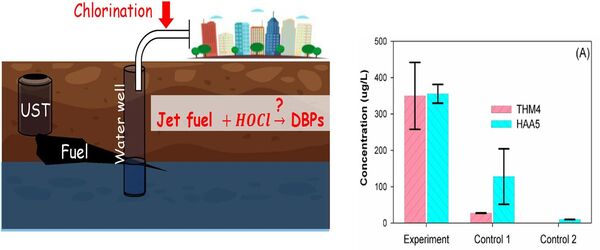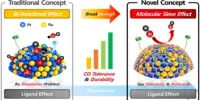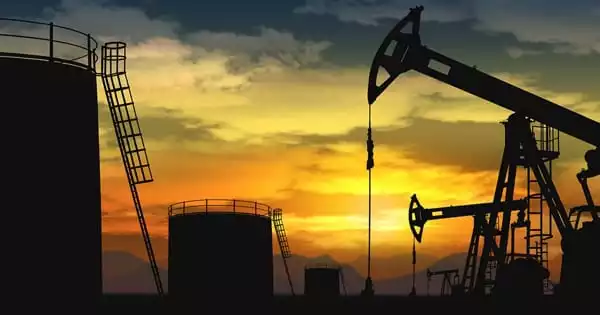A new study from the University of Hawai’i at Manoa demonstrates that mixing chlorine with petroleum in water can potentially cause hazardous effects to human health.
The Honolulu Board of Water Supply (BWS) and military installations clean Oʻahu’s drinking water with small levels of chlorine that meet safe industrial standards. In late November 2021, a petroleum spill from the Red Hill Bulk Fuel Storage Facility polluted the Red Hill drinking water well. Hundreds of households living on Joint Base Pearl Harbor-Hickam, the Army’s Aliamanu Military Reservation, and Red Hill Housing reported petroleum odors in tap water supplied by the US Navy water system.
Researchers at UH Manoa’s College of Engineering and Water Resources Research Center (WRRC) conducted lab experiments that revealed elevated levels of THM4 (Total Trihalomethanes) and HAA5 (Haloacetic Acids), both of which are classified as disinfection byproducts that can form during the chlorination of petroleum-contaminated water. THM4 was the most abundant, and a variety of uncontrolled disinfection byproducts were generated. The researchers emphasize that their findings are based on controlled lab conditions, and further research is required to understand the real-world ramifications.
These findings highlight the potential health risks associated with chlorinating petroleum-contaminated water, and further research is needed to fully understand these risks in real-world conditions.
Professor Tao Yan
According to the Centers for Disease Control and Prevention, “Chronic exposure to disinfection byproducts may increase risk of cancer. Humans exposed to unusually large amounts of some disinfection byproducts could experience liver damage and decreased nervous system activity.”
“These findings highlight the potential health risks associated with chlorinating petroleum-contaminated water, and further research is needed to fully understand these risks in real-world conditions,” said study co-author and Professor Tao Yan from the UH Manoa Department of Civil, Environmental and Construction Engineering and WRRC.

During the lab process, control reactors containing either only free chlorine or only petroleum hydrocarbons produced significantly lower or no detectable levels of disinfection byproducts, which indicated that the presence of petroleum hydrocarbons and free chlorine together was responsible for the elevated disinfection byproduct concentrations.
“Recent contamination events in the Pearl Harbor aquifer show that petroleum hydrocarbons can directly enter groundwater wells without undergoing natural breakdown processes,” Yan told the audience. “This work demonstrates that when unaltered petroleum hydrocarbons come into contact with free chlorine, which is widely employed in water treatment, they can produce higher levels of controlled disinfection byproducts. Understanding the potential dangers during both water treatment and distribution is critical to maintaining water quality and preserving human health.”
















